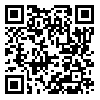Tue, Dec 2, 2025
[Archive]
Volume 18, Issue 1 (2025)
JMED 2025, 18(1): 140-146 |
Back to browse issues page
Ethics code: SS2024REC-014
Download citation:
BibTeX | RIS | EndNote | Medlars | ProCite | Reference Manager | RefWorks
Send citation to:



BibTeX | RIS | EndNote | Medlars | ProCite | Reference Manager | RefWorks
Send citation to:
Hu H, Hashim H, Li X. Bridging language and learning: A CLIL-ized TMI model for international students in traditional Chinese medicine. JMED 2025; 18 (1) :140-146
URL: http://edujournal.zums.ac.ir/article-1-2358-en.html
URL: http://edujournal.zums.ac.ir/article-1-2358-en.html
1- Faculty of Education, Universiti Kebangsaan Malaysia, Bangi, Malaysia , p108937@siswa.ukm.edu.my
2- Faculty of Education, Universiti Kebangsaan Malaysia, Bangi, Malaysia. University Research Group on Eduxcellence: Development of Innovative Curriculum & Pedagogy, Universiti Kebangsaan Malaysia, Bangi, Malaysia
3- School of Traditional Chinese Medicine, Shandong Second Medical University, Weifang, China
2- Faculty of Education, Universiti Kebangsaan Malaysia, Bangi, Malaysia. University Research Group on Eduxcellence: Development of Innovative Curriculum & Pedagogy, Universiti Kebangsaan Malaysia, Bangi, Malaysia
3- School of Traditional Chinese Medicine, Shandong Second Medical University, Weifang, China
Abstract: (922 Views)
Background & Objective: The increasing number of international students studying Traditional Chinese Medicine (TCM) in China has brought to light challenges related to the linguistic complexity and specialized terminology of TCM courses, which are primarily conducted in Chinese or English. This Short Communication paper presents an innovative teaching model that combines language instruction with subject-specific content to address these challenges.
Materials & Methods: The model was implemented with 128 international students at a Chinese university. Data collection involved tests assessing English and Chinese language skills, TCM knowledge, and student satisfaction through a questionnaire.
Results: Students showed significant improvements in language proficiency and TCM knowledge. Responses from the questionnaires indicated high levels of satisfaction, with participants noting advancements in their linguistic skills, mastery of content, and cultural understanding.
Conclusion: Integrating language support into subject-specific teaching effectively addresses challenges in international TCM education, offering a replicable model for similar contexts.
Materials & Methods: The model was implemented with 128 international students at a Chinese university. Data collection involved tests assessing English and Chinese language skills, TCM knowledge, and student satisfaction through a questionnaire.
Results: Students showed significant improvements in language proficiency and TCM knowledge. Responses from the questionnaires indicated high levels of satisfaction, with participants noting advancements in their linguistic skills, mastery of content, and cultural understanding.
Conclusion: Integrating language support into subject-specific teaching effectively addresses challenges in international TCM education, offering a replicable model for similar contexts.
Article Type : Orginal Research |
Subject:
Education
Received: 2024/12/11 | Accepted: 2025/04/5 | Published: 2025/04/14
Received: 2024/12/11 | Accepted: 2025/04/5 | Published: 2025/04/14
References
1. Zhang J, Zhou S, Pan H, Yan L, Rao Y, Liang S. Report on the preservation and innovation development of traditional Chinese medicine. 2023. [Online]. Available from: [Accessed on Oct. 23, 2024] [DOI]
2. Wang X, Ed. Chinese medicine. Beijing: People’s Medical Publishing House; 2021. [Online]. Available from: [Accessed on Oct. 15, 2024] [DOI]
3. . Xu J, Zhang T, Ge S, Zhang S. Research on the barriers and countermeasures in developing the international education of Chinese medicine. Curriculum and Teaching Methodology. 2021;4(1):32–37 [DOI]
4. Fan Y, Zhang S. Exploration on the construction of bilingual teacher development system for foreign students in university of traditional Chinese medicine based on the CLIL theory. Chinese Medicine Modern Distance Education of China. 2024;22(7):27-29 [DOI]
5. Vanisree M. New trends in English language teaching & learning. Bhopal: AGPH books; 2023
6. Hu H. Emerging from content and language integrated learning and English-medium instruction, is CLIL-ised EMI the next trend of education? Higher Learning Research Communications. 2023;13(2):1–8. [DOI]
7. Coyle D, Meyer O. Beyond CLIL: Pluriliteracies teaching for deeper learning. Cambridge: Cambridge University Press; 2021 [DOI]
8. Almushwat R, Elkout H. Language barriers in studying medicine in English: concerns and attitudes of clinical phase medical students at the University of Tripoli. AlQalam Journal of Medical and Applied Sciences. 2024;7(4):1022-1030 [DOI]
9. Zhou X. The exploration of CLIL teaching mode under the background of the reform of vocational education. Journal of Southern Vocational Education. 2020;10(5):84–89 [DOI]
10. Alimjanova LX, Nosirova UK. Content-based instruction in language teaching in relation with CLIL: implementation and outcome. Central Asian Research Journal for Interdisciplinary Studies. 2022;2(1):392-399 [DOI]
11. Ding N, Ed. TCM English proficiency test syllabus (trial) — with mock test papers. “Chinese Medicine English Proficiency Test” Project Preparatory Group. 2016. [Online]. Available from: [Accessed on Nov. 1, 2024] [DOI]
12. Center for Language Education and Cooperation, Chinese Testing International, Eds. The medical Chinese proficiency test (MCT). Beijing: Higher Education Press; 2020. [Online]. Available from: [Accessed on Nov. 2, 2024] [DOI]
13. Zheng H, Yang Z, Eds. Basic theory of traditional Chinese medicine exercises. Beijing: China Association of Chinese Medicine; 2022. [Online]. Available from: [Accessed on Oct. 28, 2024] [DOI]
14. Sinaga IRV, Maisarah I. EMI for international class: how do students perceive it? Journal of English for Specific Purposes in Indonesia. 2024;3(2):135–144. [DOI]
Send email to the article author
| Rights and permissions | |
 |
This work is licensed under a Creative Commons Attribution-NonCommercial 4.0 International License. |




